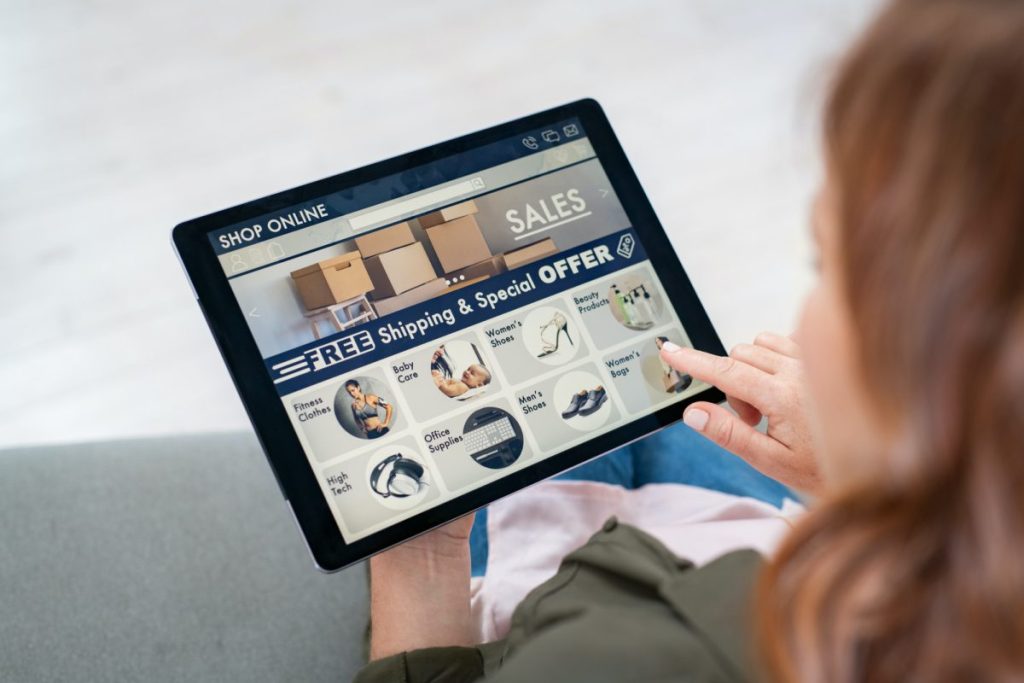Brands have traditionally considered online and offline content in two very different buckets, with budget silos creating twice the workload and plenty of inefficiencies for teams tasked with the same challenge – whether it’s to get more bums on seats or nurture more leads to sales. The publishing world has had similar issues, hiring digital experts to pump content onto websites with little reference to or interaction with print editors.
We build business strategies and create content for websites, social media channels and video streaming platforms – content that is optimised for desktop, tablet and mobile. This optimisation can be for relevant keywords, tags, image alt-tags, A/B testing, automation and packed into 140 characters. It is visualised, reviewed and updated on a regular basis because when it’s online it’s easy to change and – like Trump’s tweets – possible to take down.
The unveiling of the first brick-and-mortar Amazon store in New York last month proved that consideration of both online and offline behaviour and preferences can result in a slick – and optimised – experience for customers. Sure, Amazon may have the advantage of being an eCommerce brand, but it has mirrored the digital world while adhering to retail best practices to create a synergy that customers are surely going to come to expect from other brands.
Glossy.co recently published an interesting piece on what fashion brands can learn from Amazon’s stores, but I think the takeaways from trailblazer brands, such as Amazon, that are aligning their online/offline experiences are applicable in the retail sector and beyond.
Using digital data to inform your offline decisions
Two points struck me in the Glossy.co article as key to a holistic online/offline content strategy. First, “translate data to a real-life experience”. As digital marketers, we’re continually coveting data that will inform and enhance the digital experience for our customers, so why not use online data to inform offline content, services or benefits? Amazon does this by “hero”ing ‘best-rated books’ and ‘local favourites’ in its physical store.
As a non-retailer, you could:
- Use digital FAQs, customer enquiries and comments to decide what information to include on your packaging, brochure or welcome pack/onboarding programme.
- Use blog and social analytics to determine which topics appeal to your audience, and influencer data on which figures are influential for those topics (harnessing BuzzSumo, Klout etc.) to develop an event strategy, and panel or speaker schedule.
- Use data on which sources are organically driving traffic to your website, as well as your customers’ preferred media titles/brands to plan your print/OOH advertising.
- Use data on your most viewed products (or most purchased) to inform which items to showcase at a trade show or highlight in a sales presentation.
Second, “tie in customer reviews”. Not all brands have user-generated reviews, but if you’re tracking your brand/product on social media you might come across the odd positive mention (if you’re lucky!). Perhaps including a customer tweet in your sales collateral isn’t the norm, but you could use these appraisals to inform which positive attributes to highlight. We predict there will be more customer reviews on display in-store. In fact, why wouldn’t the store of the future include real-time social endorsements on digital screens?
Using mobile apps to put your customer in control
Great Minds uses WeWork, so we’ve had first-hand experience with the brand’s online/offline content strategy. First, all members are invited to download the app and create a digital profile that’s attached to their WeWork account. Via the app, you can book meeting rooms, sign up for events, register guests, access benefits and discounts, browse the feed for member updates and read the building guide for your branch. This information is also available offline via posters and noticeboards, on screens around the building and via staff at the front desk. The WeWork culture is embedded in every piece of content you consume, and you have the power to affect your real-world experience at your fingertips.
Other brands are also adopting what Marketing Land has described as retail that is “mobile-informed”, including Amazon, which offers self-checkouts, and Lowe’s which, in partnership with Google, uses augmented reality to help customers locate items in-store. This ‘WeWork approach’ could be applied to all brands in physical spaces, from gyms to banks.
Using in-store experiences to shape online content
While online content can support the offline experience, the real world can clearly prove a great stimulus for digital content marketing. Topshop, for example, uses in-store content developed by staff, ambassadors and customers to populate its digital channels. A recent guest appearance by fashion journalist and influencer Pandora Sykes at the Topshop Oxford Circus flagship store led to an interview for the Topshop blog on summer trends. A campaign last year called ‘Wish you were at Topshop’ also saw the retailer provide freestyling and make-up sessions in-store across 11 cities, where recipients were encouraged to upload images of their experience to social media. The campaign generated a year’s worth of activity on Topshop’s Facebook page in just four days, proving the power of involving the customer in content creation – whether that content is live online or offline.
Using real-world experts to demonstrate brand authority
Equinox is a brand that has tapped into the lifestyle preferences and needs of its health-conscious, highly paid and time-poor customers through digital content. The Furthermore blog provides a holistic view of health trends and innovations, from recipes and sleep advice to 20-minute workout videos featuring trainers from Equinox gyms. Many health brands might consider launching a health blog, but few brands have such immediate access to experts from across the wide field of fitness. While the goal is to create engaging content for your customers, there’s no substitute for using the expertise you have at your disposal to create content that both resonates with the audience and showcases why you should be their go-to brand for all things related to the topics you cover.


